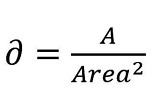| Material Parameters Testing:
Absorption Testing
ISO-354 & ASTM-C423:
NWAA Labs tests for absorption coefficient using both the ISO-354 and the ASTM-C-423 standards. This is a technique that compares the reverberation times of an empty reverberation room and the same room with a sample in it. The reverberation times of the full room are subtracted from the reverberation times of the empty room and the resultant is converted to an absorption quantity expressed in Sabins or Metric Sabins. The quantity of absorption is then divided by the square area to produce an "Absorption Coefficient".

The results are then delivered to the customer as a detailed report along with a Chart and Graph of the coefficients.
Ron Sauro has actively researched the acoustical parameters of materials that are used in construction. Absorption is one of those parameters and this research has produced a number of papers and studies on the subject. One of the problems researched was that some "Absorption Coefficients" exceeded 1.0. A "coefficient", by mathematical definition, cannot exceed 1.0. The general feeling was that the mathematical conversion was flawed.
When the number exceeds 1.0 we need to recognize that these values are correct. What this really means is that the divider is not the correct parameter.
Many people explained that the results were affected by something called "edge effect". When these people were asked "What is edge effect?" no one seemed to have a real answer and pointed to papers going back to the 1930's. After studying these papers, Ron found no real answers to his question but many observations of "edge effect". Ron undertook a regime of testing and comparing various configurations of common materials with the idea of finding out what "edge effect" was. Why is this important?.
All architectural acoustics consultants use the "coefficient" to predict the reverberation times of rooms being designed. Absorption has consistently been underestimated because of the restrictions on the value of the coefficient. Consultants need a more accurate constant.
You can read about the results here.

Home Back
|

